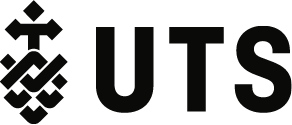What does accessible learning design look like in practice? A recent resource collection on the Education Express website highlights some effective strategies and creative solutions from UTS academics that meet specific accessibility requirements in their subjects.
In the following two examples from the Graduate School of Health’s Elise Robinson, traditional learning materials for the subject Acute Physiotherapy Care were identified as needing adjustments for a student with low vision. The solutions were developed in collaboration with Florence Borbe from the Education Portfolio’s Inclusive Practices Team, as well as the student and their Accessibility Consultant. They were then tested via regular consultations with Accessibility Services with the student’s feedback used to iterate for new versions.
Adobe enhancements for X-rays
In this subject, students are expected to analyse a range of X-rays to identify lung/cardiac health and bone/rib injuries to determine the most effective treatment. These visuals are used throughout the Canvas modules of the subject, and shown in weekly masterclass slides and simulation classes.
For the student experiencing vision loss, it’s difficult to see detailed parts of these X-rays due to the grayscale and lack of contrast, but they have the ability to view large text and bright colours.
To make the X-rays for accessible for this student, specific sections were edited with a brush tool in Adobe Lightroom to enhance contrast and exposure. Arrows and circles were used to highlight specific issues, while bright colours such as reds and pinks added contrast and increased visibility.
Tactile Swell paper for ECGs
On Week 9 of the same subject, the students are expected to recognise and analyse indicators of cardiac health on ECGs. Students with low vision can find viewing the ECGs challenging due to the small size and intricacy of the waves and grids.
The team focused on making the ECGs tactile so the student with low vision could interpret the results by touch. This was achieved by printing them on Swell paper using a Zyfuse machine, with the process yielding the following benefits:
- Black/dark parts of the image were raised and key parts were enlarged
- Adobe Illustrator was utilised to outline over the waves and create grid lines/squares
- Line width was varied between waves, grid lines and squares so the student could differentiate between the various elements
- A single lead of the ECG trace on each piece of swell paper to better highlight the change and increase its size
- A short description of each ECG result was placed under the grid in large text for easy interpretation
- Arrows pinpointing areas of interest were coloured red to allow for contrast and clarity
Modelling alternatives
Models can also be an accessible alternative in Health subjects.
- For the X-ray case study above, a medical model of the heart and lungs with detachable components was used alongside these X-rays – this enabled students to gain a clearer understanding of the placement, function and features of these organs in relation to the ribs, collarbone and spine
- Peter Stubbs from the Graduate School of Health utilised a medical model of the brain to make content accessible for a student with low vision
- The School of Sport, Exercise and Rehabilitation’s Lee Wallace, who won an Individual Teaching Award for enhancing student engagement through sensory rich learning, continues to explore ways to make anatomy more accessible for students with low vision
It’s important to note that students with the same disability may have different access needs. You should always check that your student is comfortable with the proposed alternative before proceeding. This reconsideration of materials is also a good opportunity to reflect on the purpose of images in your teaching and consider what alternatives can communicate the same concept.
You can now explore the full collection of Accessibility enhancement case studies, which includes writing alternative text for graphs and images, and converting images and scanned PDFs into accessible formats. This collection has been compiled by the Inclusive Practices Team, who offer comprehensive support, accessibility improvements and upskilling opportunities to ensure that learning materials, activities and assessments are accessible to all students. If you have a student with access requirements who needs customised resources, submit a Digital Learning Support request via ServiceConnect.
